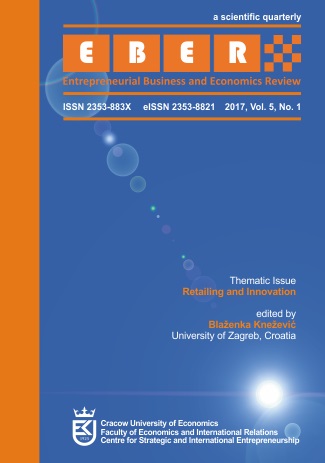Becoming Spatially Embedded: Findings from a Study on Rural Immigrant Entrepreneurship in Norway
Becoming Spatially Embedded: Findings from a Study on Rural Immigrant Entrepreneurship in Norway
Author(s): Mai Camilla MunkejordSubject(s): Economy
Published by: Uniwersytet Ekonomiczny w Krakowie
Keywords: immigrant entrepreneurship; local community; Northern Norway; rural context; spatial embeddedness
Summary/Abstract: Objective: The purpose of this article is to offer a nuanced understanding of (immigrant) entrepreneurship as a socio-economic and spatially embedded practice by analysing data from a qualitative study in Finnmark, in northernmost Norway. Research Design & Methods: The article is based on a qualitative fieldwork including business visits and in-depth interviews. The transcripts from the interviews were analysed using a constructivist grounded theory approach (CGT). Findings: The article contributes to the entrepreneurship literature in general and to the immigrant entrepreneurship literature in particular by investigating mutual connections between immigrant entrepreneurs, place and community. The article firstly reveals that immigrants may be able to successfully create and exploit entrepreneurial opportunities literally from day one in the rural community in which they settle. Implications & Recommendations: This study notes that immigrant entrepreneurs may contribute to building the periphery. Hence, developing our knowledge of how to increase the feeling of local belonging of immigrants may be important for many rural regions. This is because, rural immigrants not only represent a much needed inflow of younger people in a typically decreasing and ageing population, but also entail cultural variation and job creation, thus contributing to place development. Contribution & Value Added: The originality of this article is to investigate mutual connections between immigrant entrepreneurs, place and community, hence revealing how immigrants, when being supported by the rural community, may be able to successfully create and exploit entrepreneurial opportunities in rural communities, and, through entrepreneurship processes, may even contribute to (re)build the rural areas.
Journal: Entrepreneurial Business and Economics Review
- Issue Year: 5/2017
- Issue No: 1
- Page Range: 111-130
- Page Count: 20
- Language: English

